CaridinaKid
New Member
So it’s about 6 weeks since i made a big order of Bucephalandra. Dozens of species, going to post some photos of my tank here. Take a look, any feedback, ideas, let me know.
1: Brownie Purple with a super-mini Catrine ‘base’ underneath.
2: Belindae
3: Full tank photo, a little cluttered but I’m holding all my best samples here, not much space, most of the front carpet is a mix of Brownie Adina, Dark Malawi and Red Dagger.
4: Skeleton King, received a couple of these, seeing some melt for sure- any tips?
5: Close up of several species, red dagger on left bottom, Theia Red on the rock, Variegated glued to lava rock
6: more Variegated
7: closeup shot
8: Ghost! My healthiest sample.
9: Filiformis, the most unique Buce I have
10: Flower dying on a Biblis
11: another shot of the Brownie Purple showing amazing colors
12: My Caridina Shrimp enjoying my Super mini catrine Carpet
13: Another nice Variegated sample, unfortunately the two largest leaves melted.
14: Bonus: very random plant, I went to a wedding by a lake in another country and pulled up what I believe to be Eurasian Watermillfoil, a small amount survived in my suitcase home and I planted it and it looks surprisingly nice!
I wish my aquascaping was better, I’ve ordered some spider wood and I’m going to be tying/gluing a lot of these plants to it, will post updates of course! Any feedback/tips appreciated.
Using Co2 (using the internal filter on the right with a diffuser stuffed under to disperse it better ), standard macro/micro dosing and Flourish Advance for root growth, perhaps a little on the lean side due to wanting lower TDS for Caridina shrimp inside.
For anyone wondering about me planting some of the Buce in the substrate, it’s been debated on this sub and I’ve personally found that Buce does seem to like to grow roots into the substrate and have better growth as a result since they have access to better nutrients, I do of course try to avoid having the rhizome in the soil.
1: Brownie Purple with a super-mini Catrine ‘base’ underneath.
2: Belindae
3: Full tank photo, a little cluttered but I’m holding all my best samples here, not much space, most of the front carpet is a mix of Brownie Adina, Dark Malawi and Red Dagger.
4: Skeleton King, received a couple of these, seeing some melt for sure- any tips?
5: Close up of several species, red dagger on left bottom, Theia Red on the rock, Variegated glued to lava rock
6: more Variegated
7: closeup shot
8: Ghost! My healthiest sample.
9: Filiformis, the most unique Buce I have
10: Flower dying on a Biblis
11: another shot of the Brownie Purple showing amazing colors
12: My Caridina Shrimp enjoying my Super mini catrine Carpet
13: Another nice Variegated sample, unfortunately the two largest leaves melted.
14: Bonus: very random plant, I went to a wedding by a lake in another country and pulled up what I believe to be Eurasian Watermillfoil, a small amount survived in my suitcase home and I planted it and it looks surprisingly nice!
I wish my aquascaping was better, I’ve ordered some spider wood and I’m going to be tying/gluing a lot of these plants to it, will post updates of course! Any feedback/tips appreciated.
Using Co2 (using the internal filter on the right with a diffuser stuffed under to disperse it better ), standard macro/micro dosing and Flourish Advance for root growth, perhaps a little on the lean side due to wanting lower TDS for Caridina shrimp inside.
For anyone wondering about me planting some of the Buce in the substrate, it’s been debated on this sub and I’ve personally found that Buce does seem to like to grow roots into the substrate and have better growth as a result since they have access to better nutrients, I do of course try to avoid having the rhizome in the soil.
Attachments
-
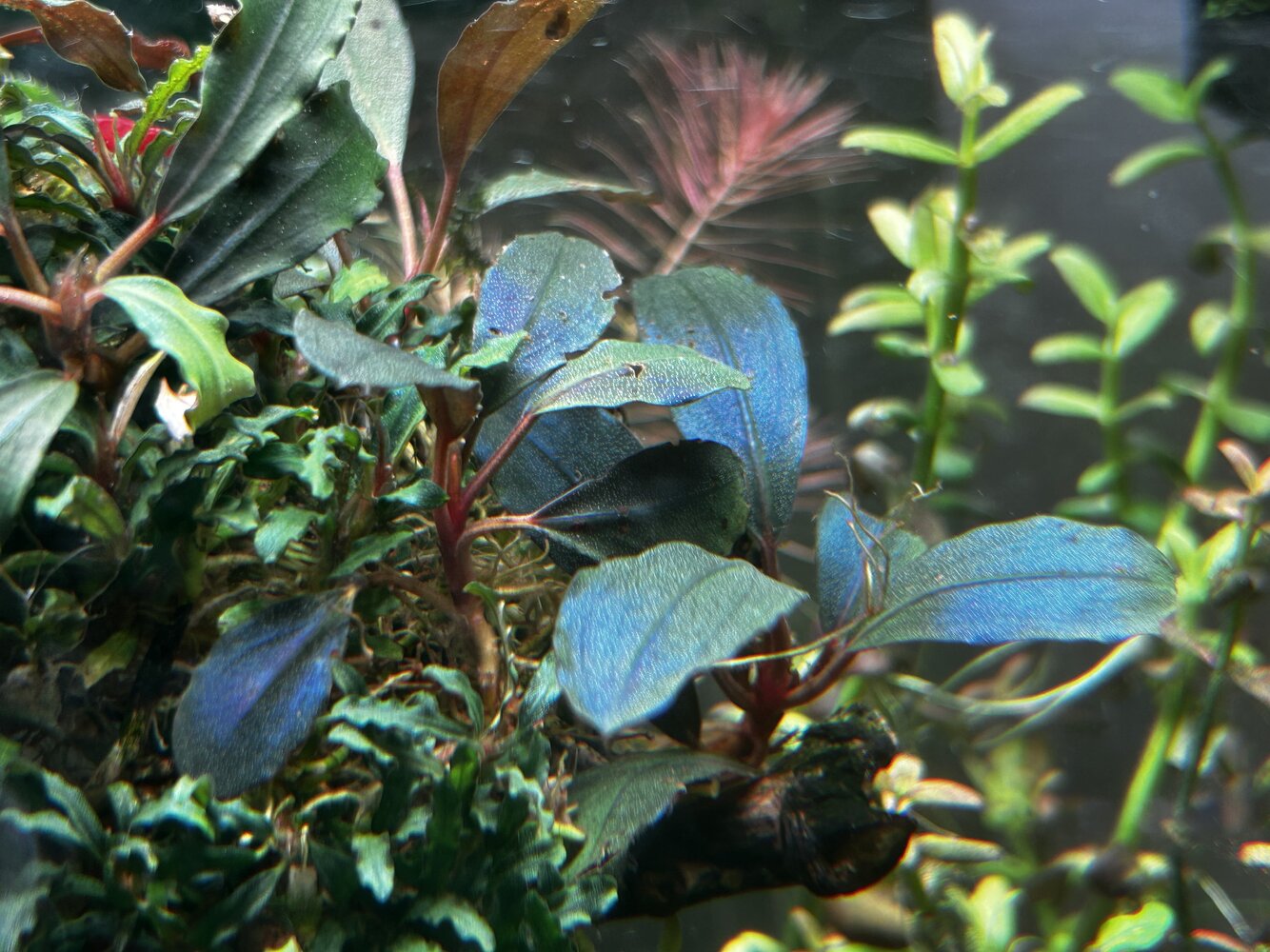 IMG_0183.jpeg2.5 MB · Views: 67
IMG_0183.jpeg2.5 MB · Views: 67 -
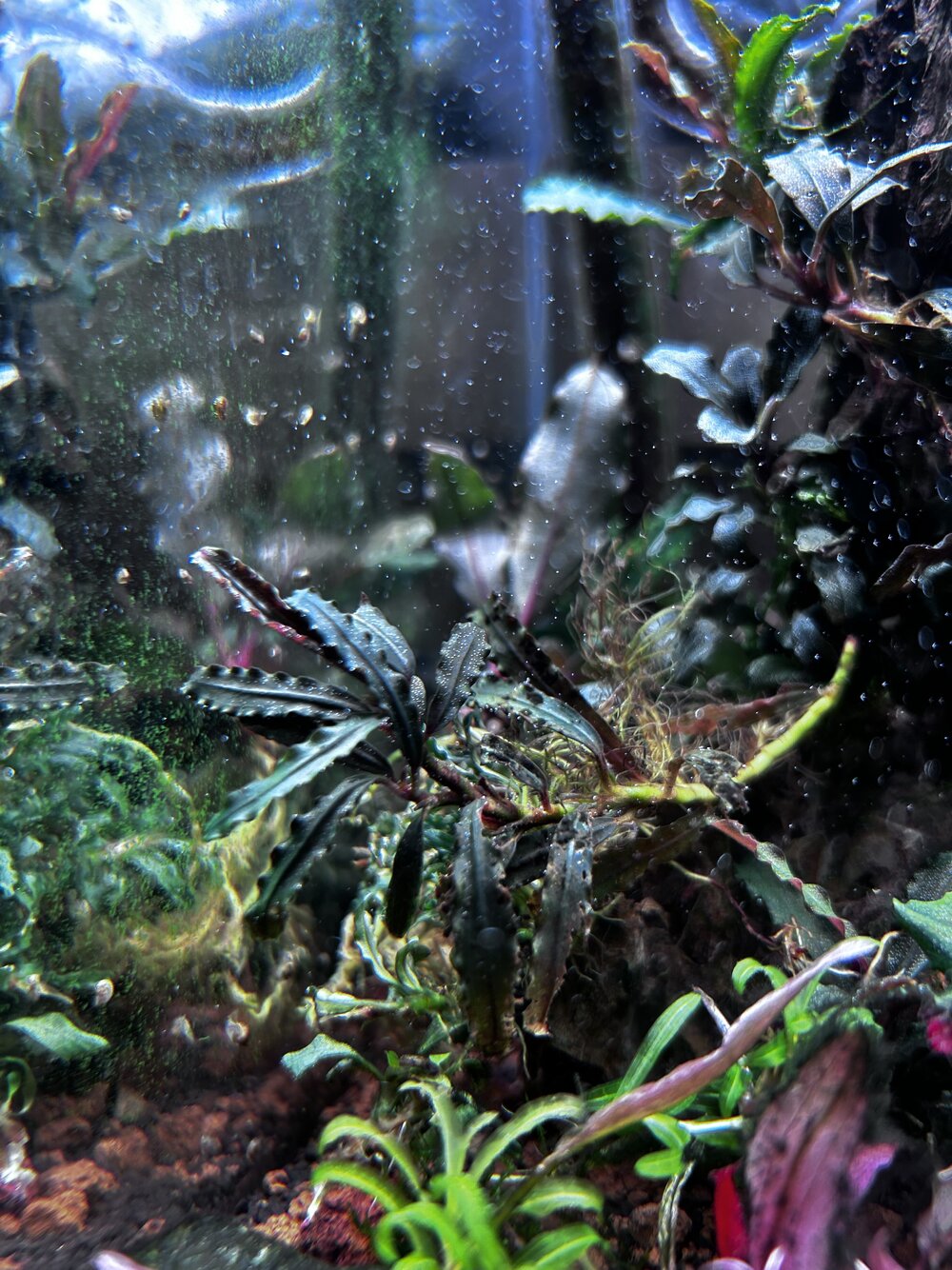 IMG_0186.jpeg1.8 MB · Views: 81
IMG_0186.jpeg1.8 MB · Views: 81 -
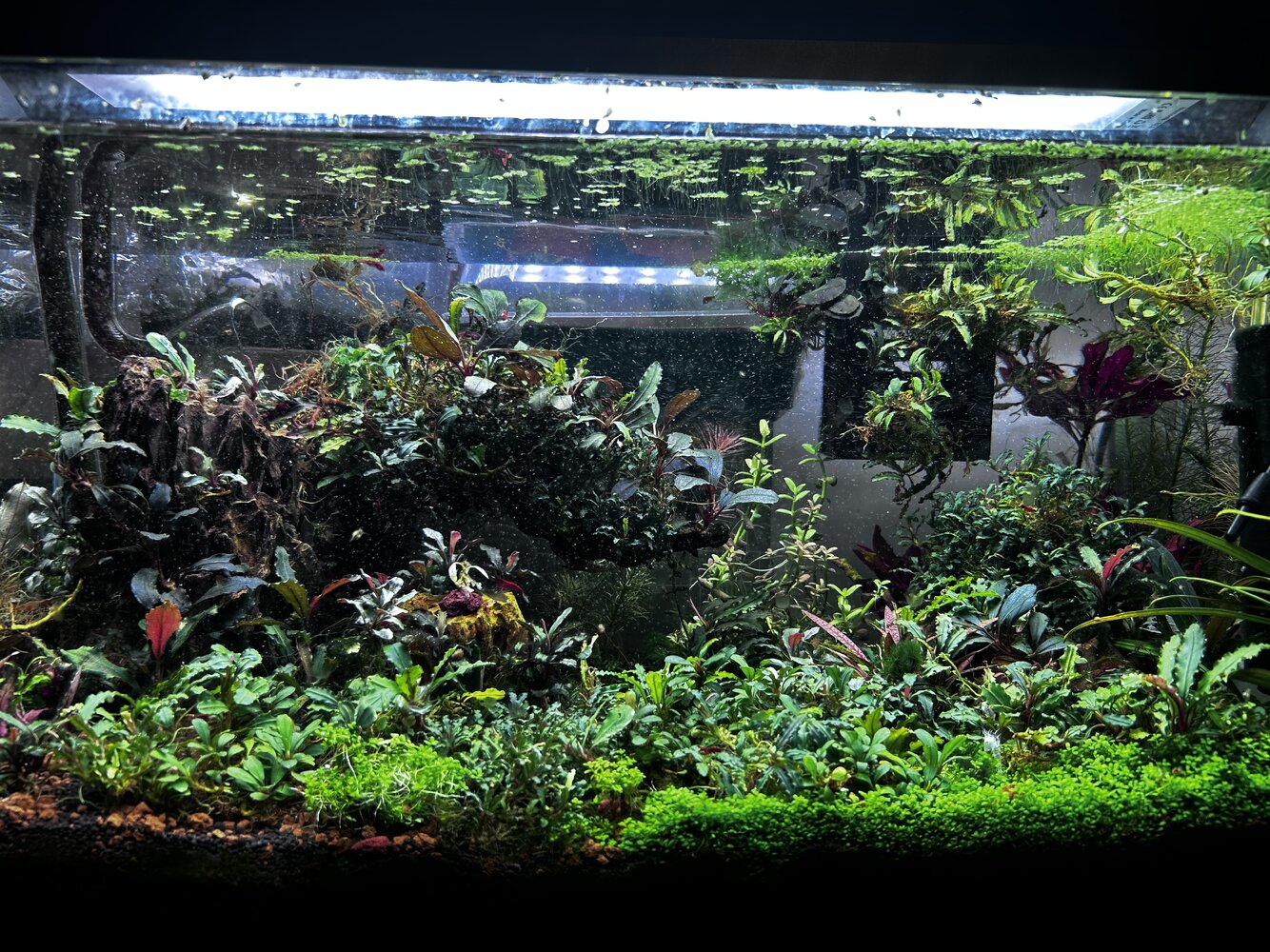 IMG_0184.jpeg4.5 MB · Views: 79
IMG_0184.jpeg4.5 MB · Views: 79 -
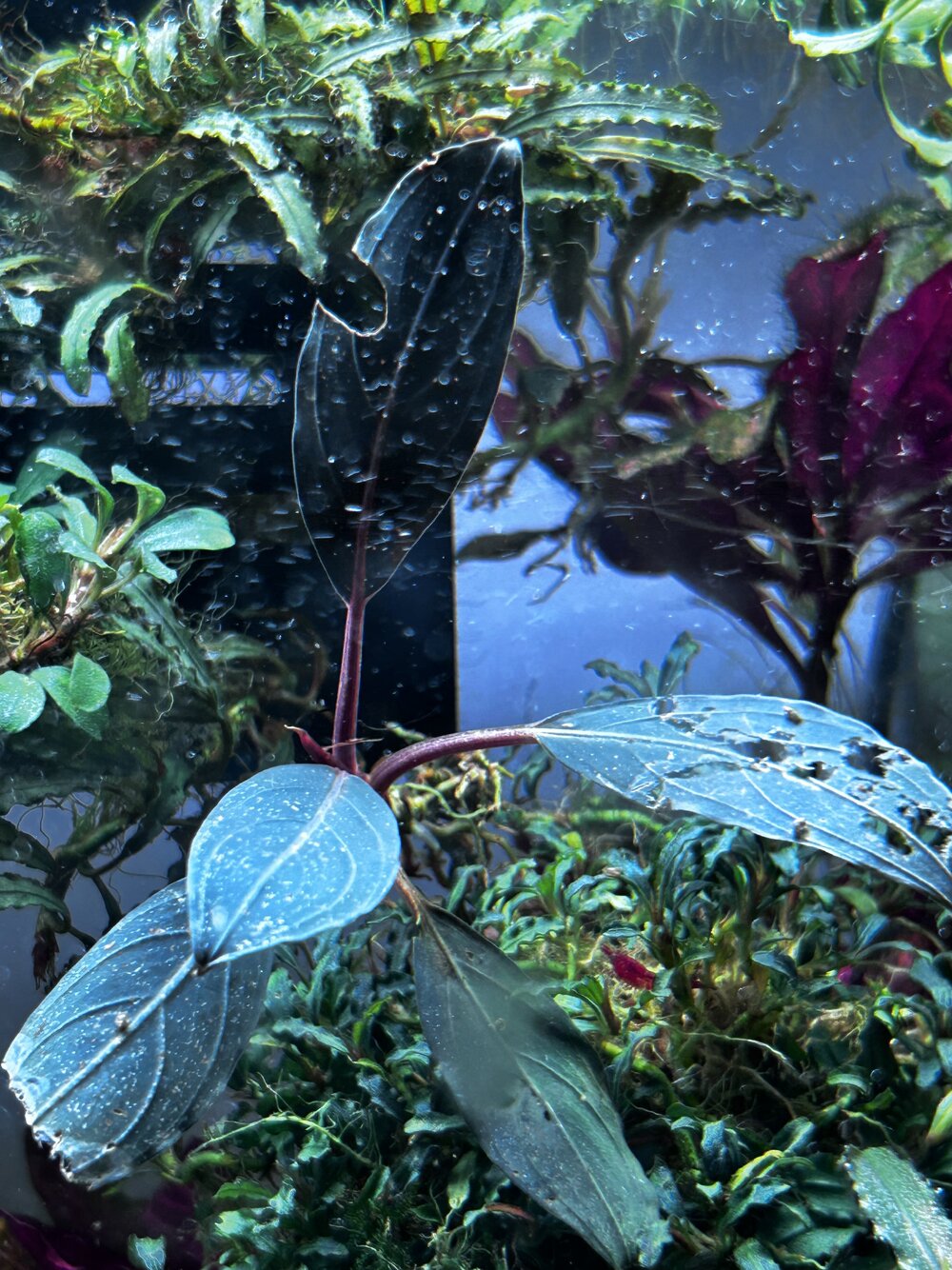 IMG_0187.jpeg1.6 MB · Views: 79
IMG_0187.jpeg1.6 MB · Views: 79 -
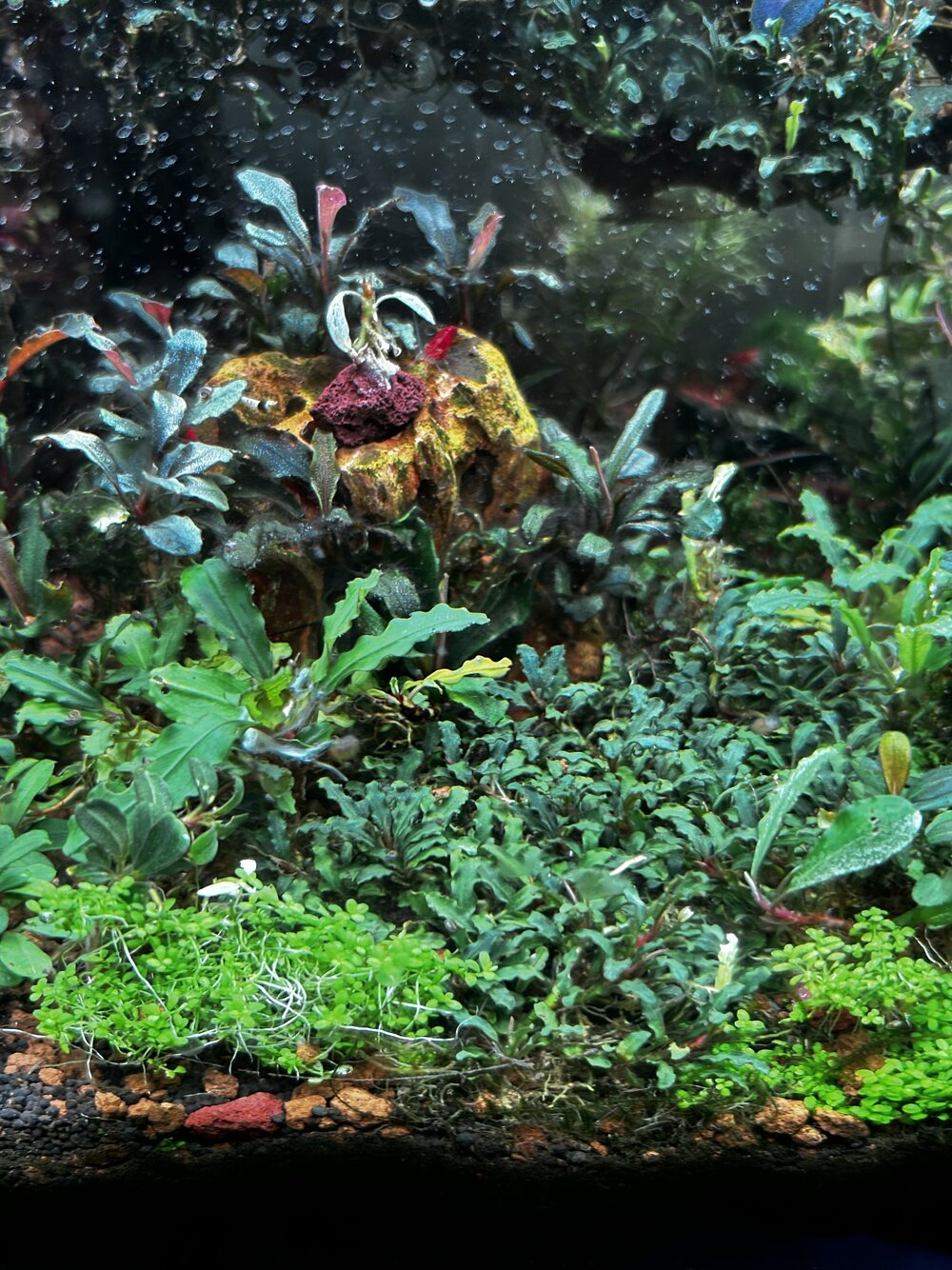 IMG_0193.jpeg2 MB · Views: 53
IMG_0193.jpeg2 MB · Views: 53 -
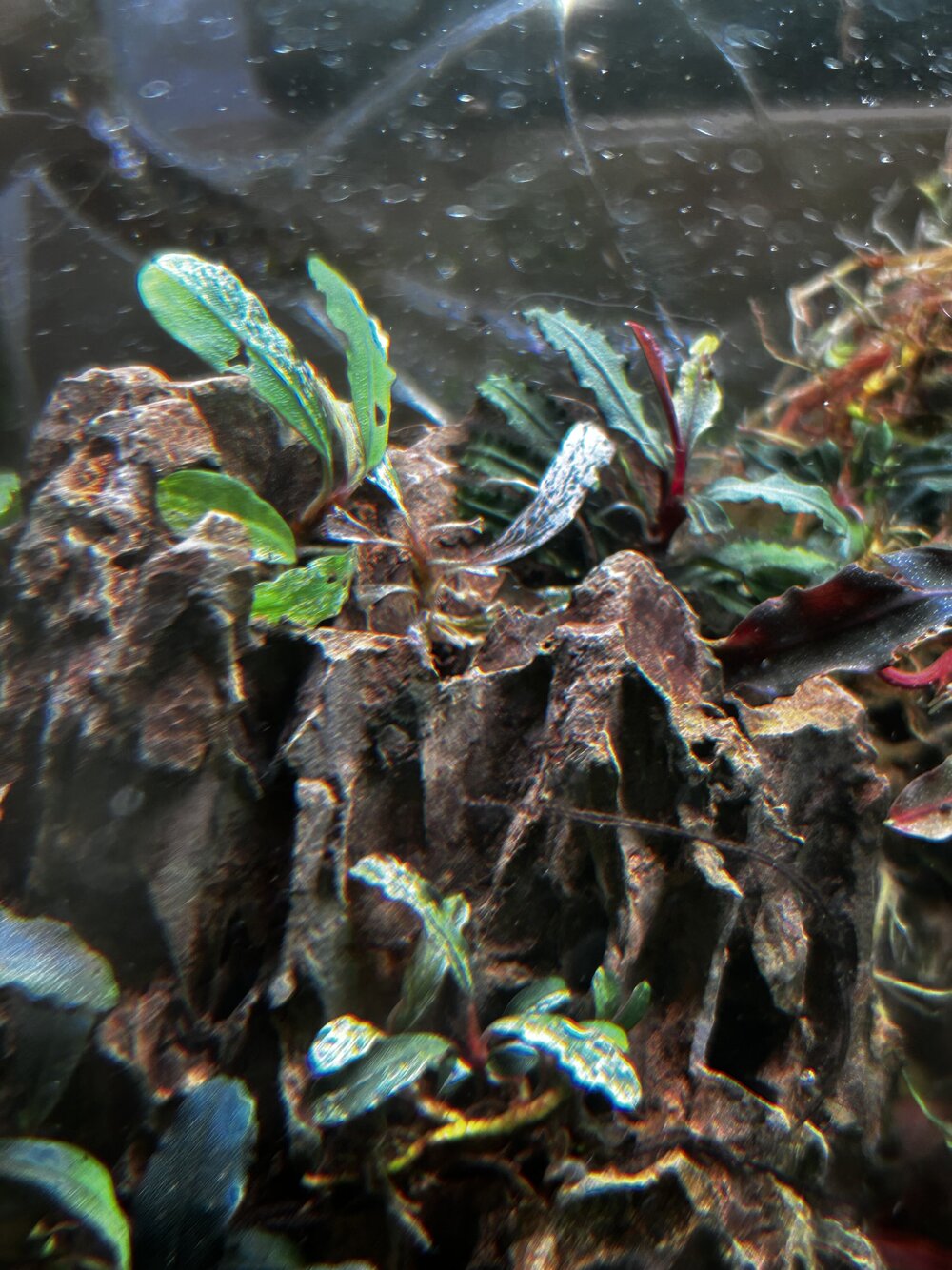 IMG_0190.jpeg1.5 MB · Views: 52
IMG_0190.jpeg1.5 MB · Views: 52 -
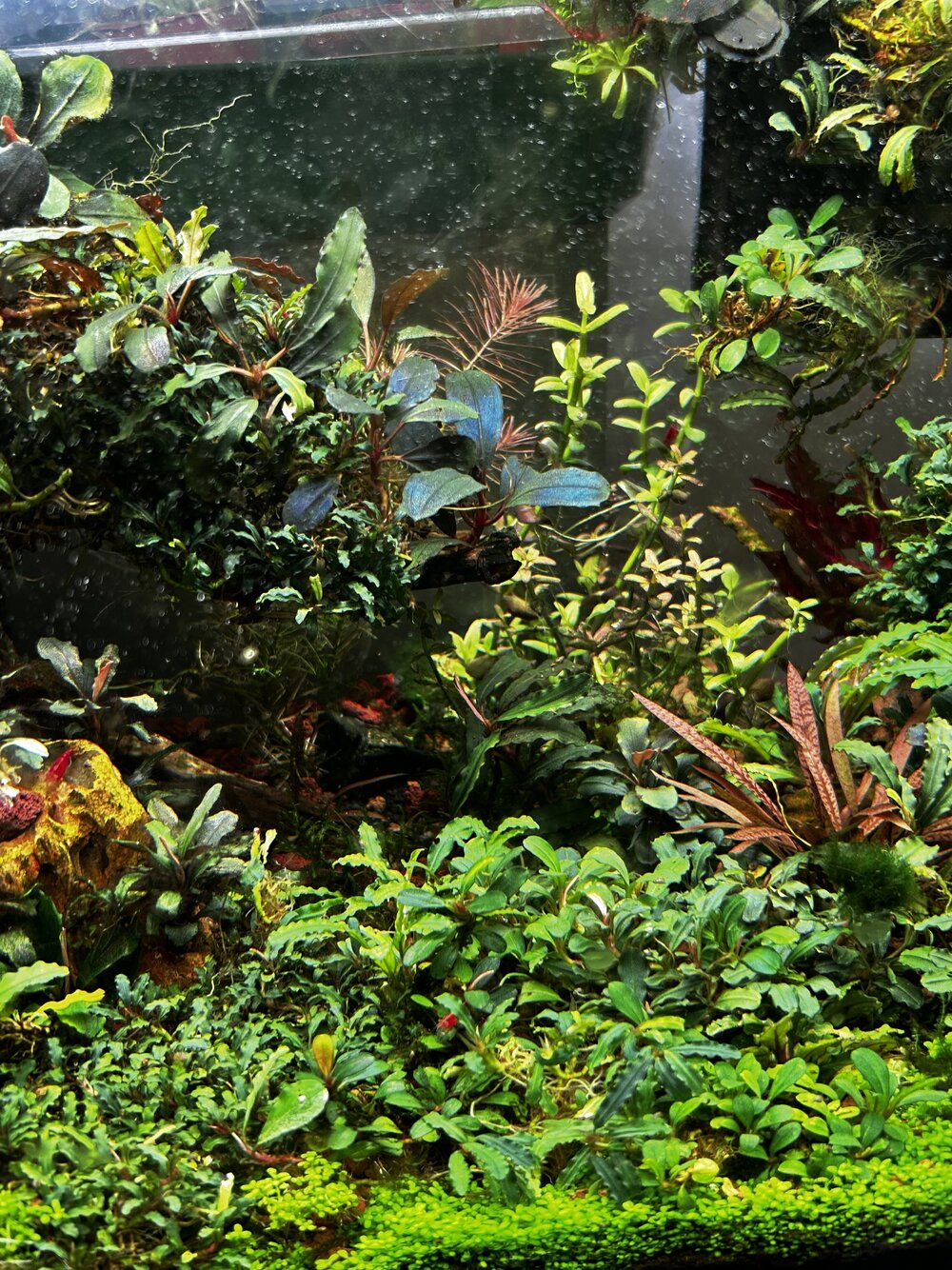 IMG_0194.jpeg2.4 MB · Views: 57
IMG_0194.jpeg2.4 MB · Views: 57 -
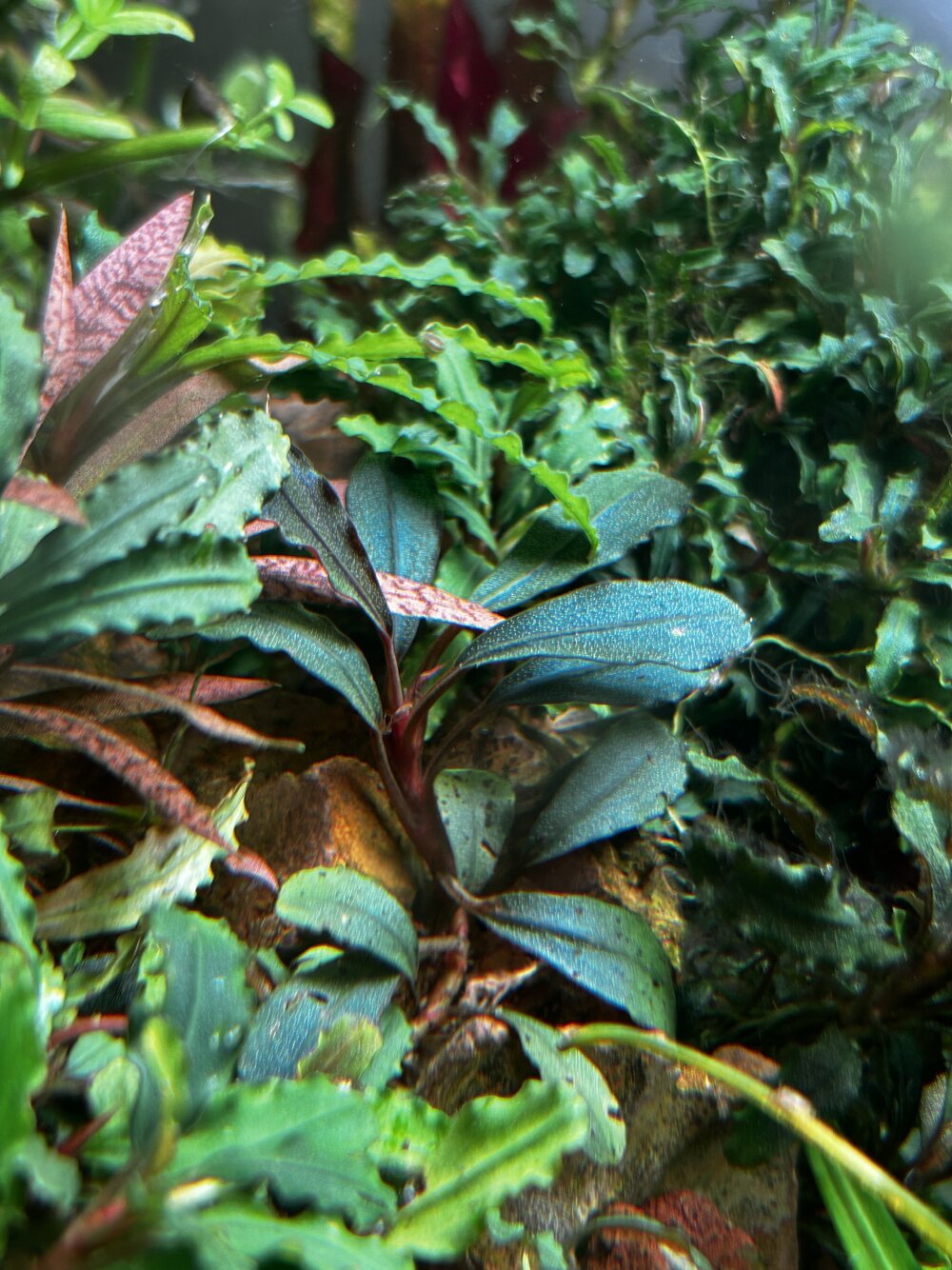 IMG_0182.jpeg1.6 MB · Views: 56
IMG_0182.jpeg1.6 MB · Views: 56 -
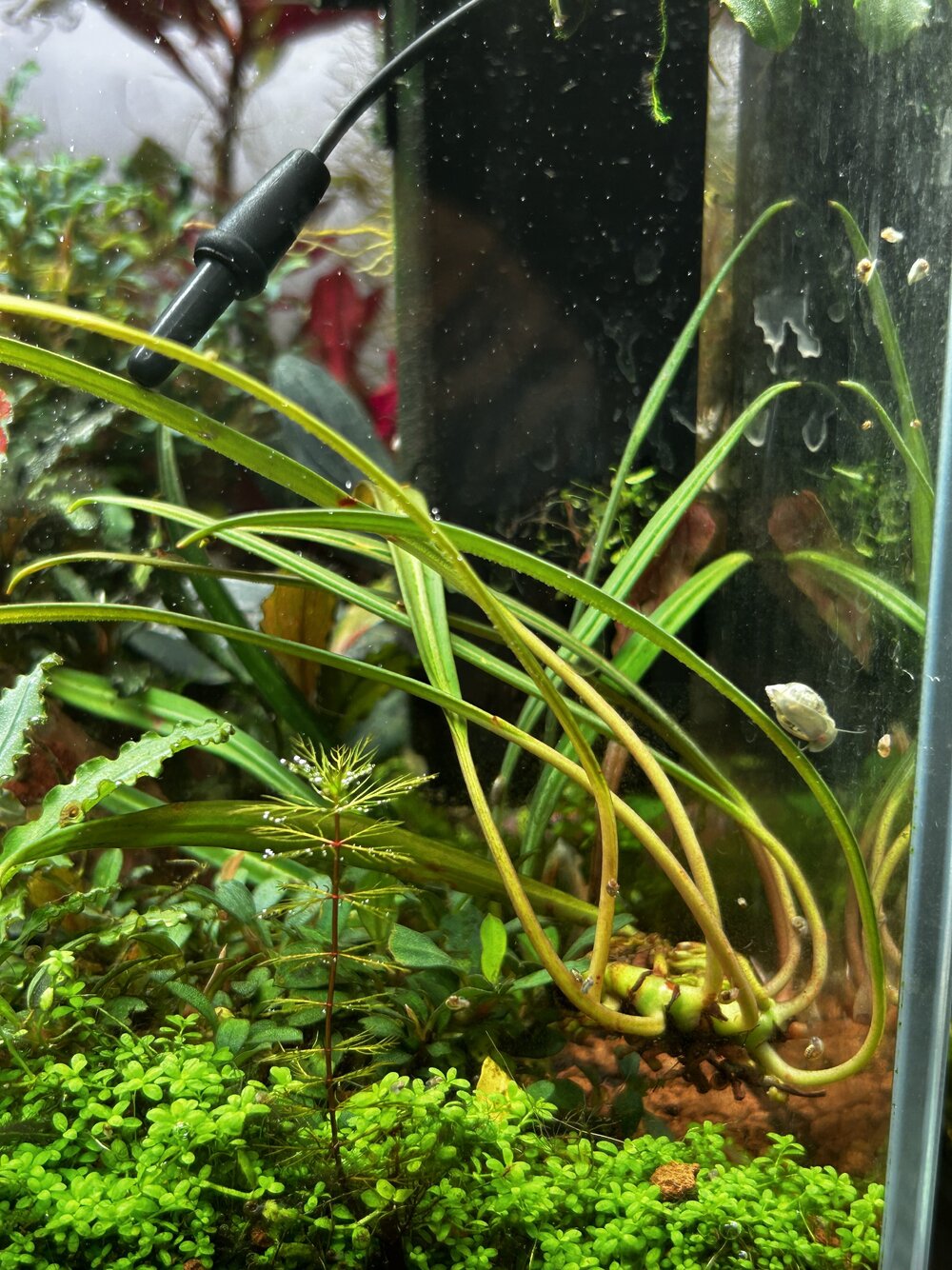 IMG_0181.jpeg1.8 MB · Views: 50
IMG_0181.jpeg1.8 MB · Views: 50 -
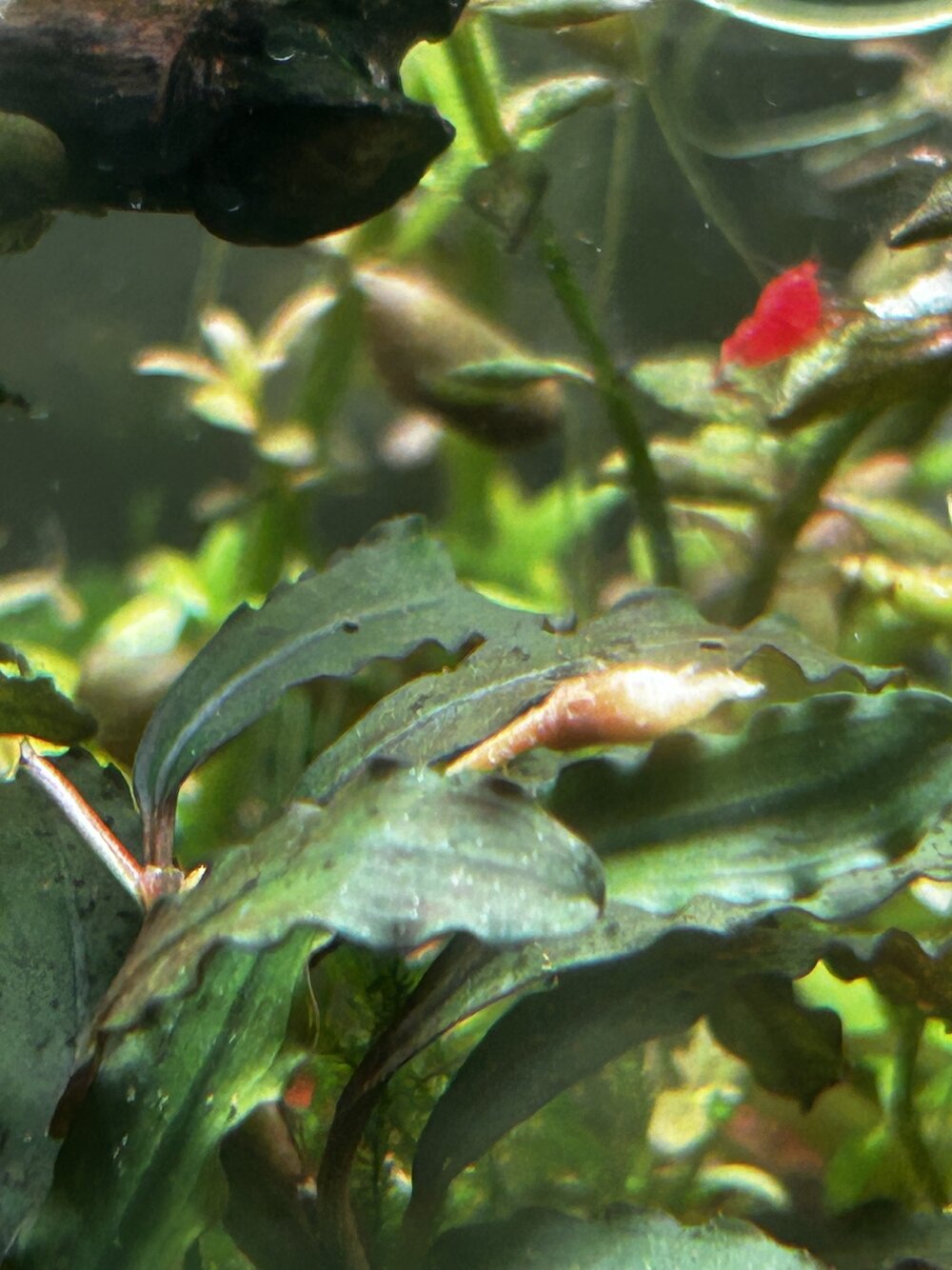 IMG_0133.jpeg955.6 KB · Views: 50
IMG_0133.jpeg955.6 KB · Views: 50 -
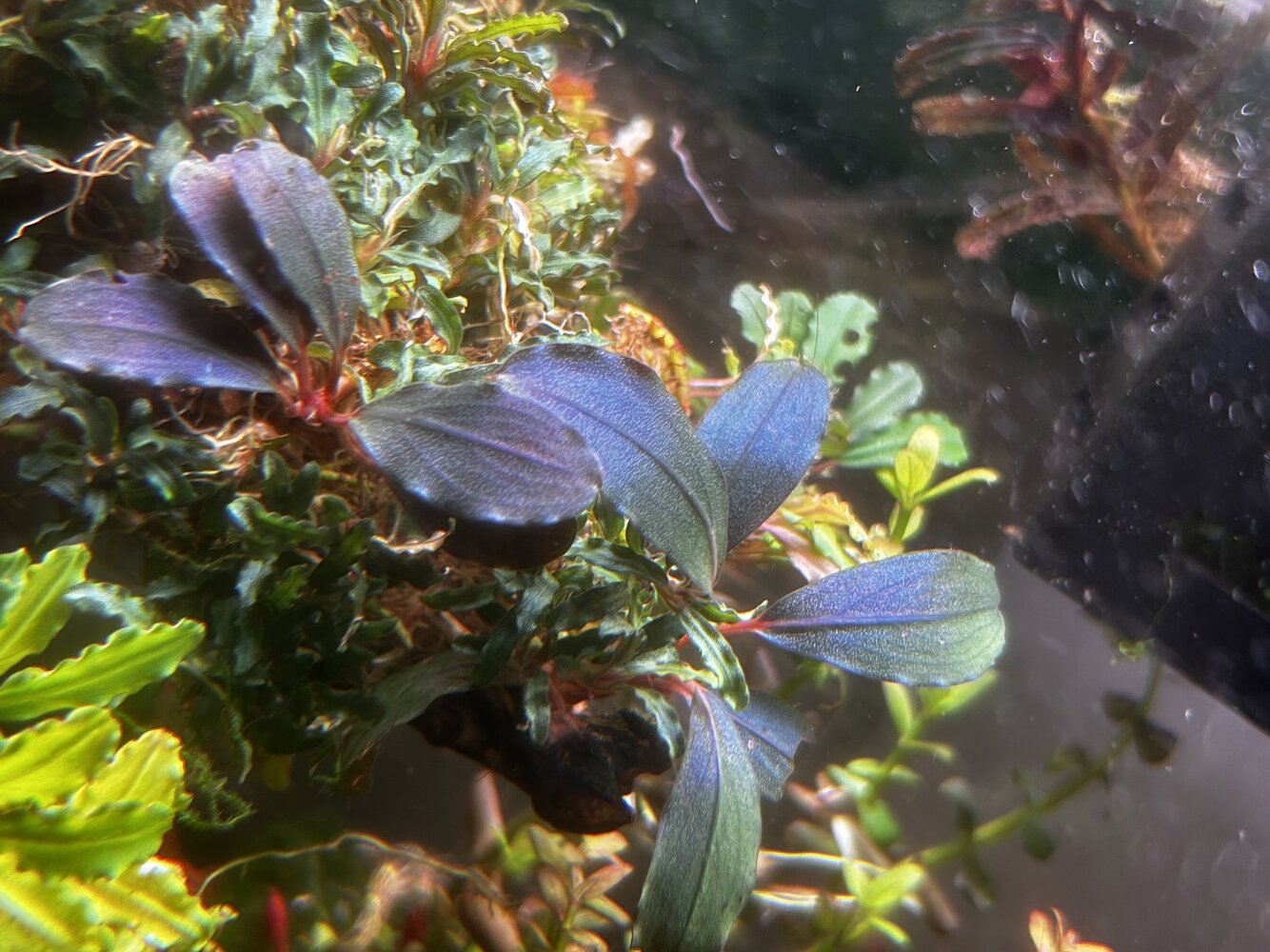 IMG_0011.jpeg1.6 MB · Views: 48
IMG_0011.jpeg1.6 MB · Views: 48 -
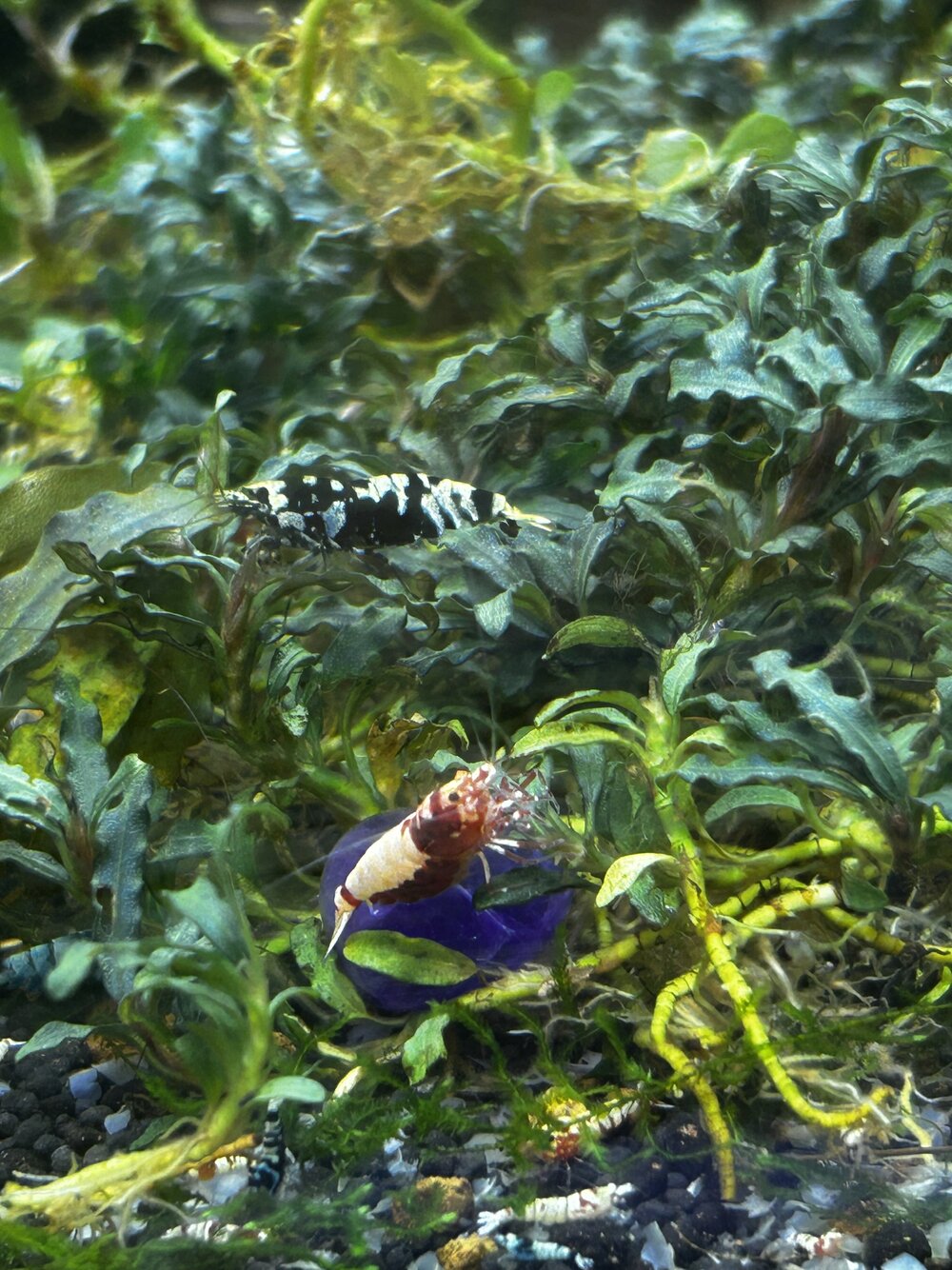 IMG_9988.jpeg1.5 MB · Views: 52
IMG_9988.jpeg1.5 MB · Views: 52 -
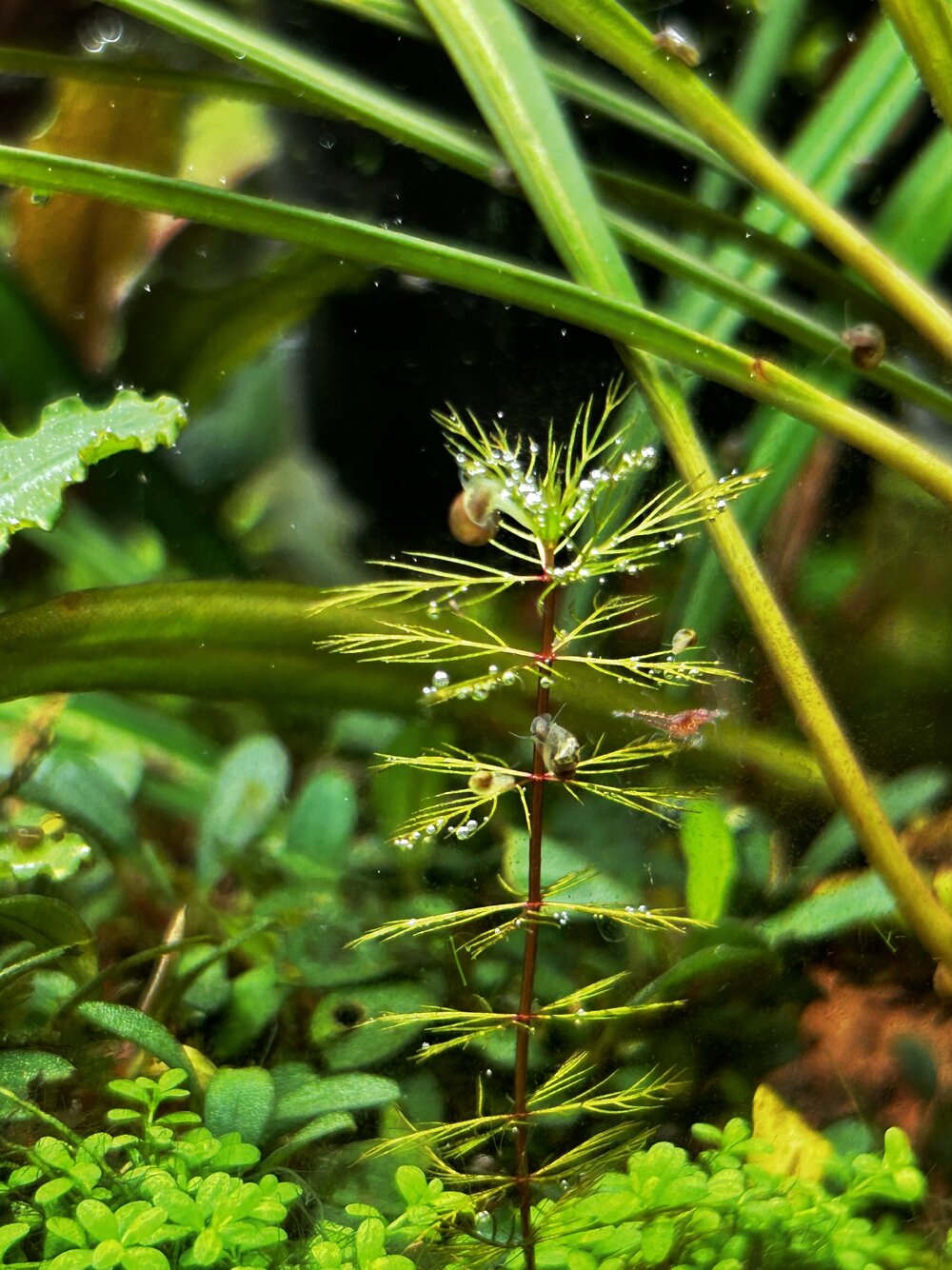 IMG_0195.jpeg1.4 MB · Views: 47
IMG_0195.jpeg1.4 MB · Views: 47 -
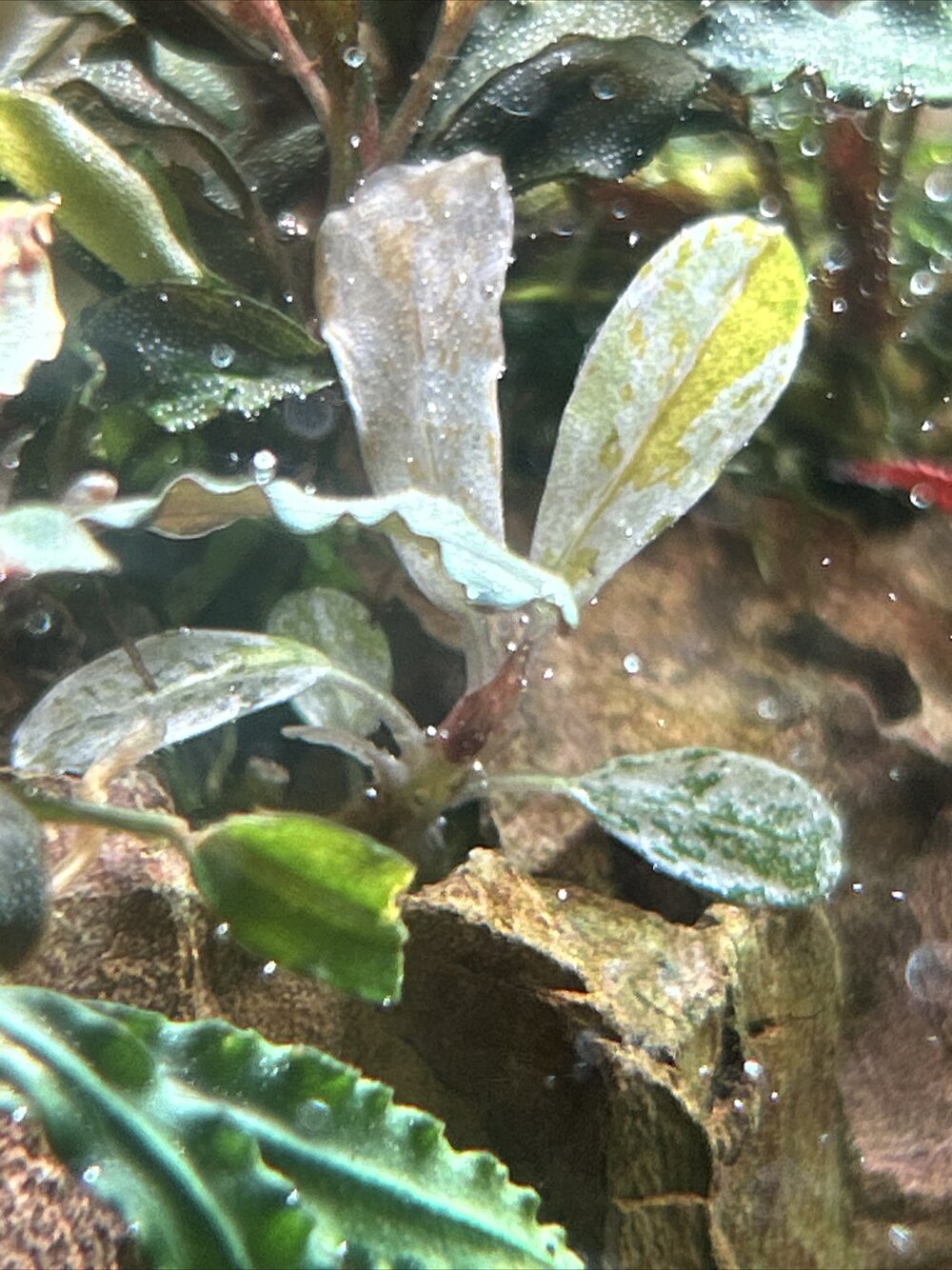 IMG_9653.jpeg702.2 KB · Views: 67
IMG_9653.jpeg702.2 KB · Views: 67


